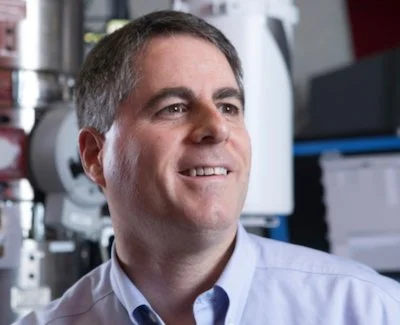This event has passed, you can see the recorded webinar here
The CoWork webinar series is dedicated to the exploitation of the coherence properties of X-rays for advanced materials characterization, with a special focus on inverse microscopy techniques, such as Coherent Diffraction Imaging (CDI), Ptychography and Holography. It is an introduction to Coherent X-ray imaging methods to facilitate the access to advanced microscopy techniques to new users and it welcomes all researchers intrigued by the spectacular coherence properties of X-rays produced at modern synchrotron sources – of which MAX IV is a first example.
When: Thursday June 16, 15.30 - 16.30
Speaker: David A. Muller, Cornell University, USA
Title: Atomic Resolution Imaging by Electron Ptychography
Bio:
David Muller is the Samuel B. Eckert Professor of Engineering in the School of Applied and Engineering Physics at Cornell University, and co-director of the Kavli Institute for Nanoscale Science at Cornell. Muller received his BSc degree from the University of Sydney, his PhD degree in physics from Cornell, and was a research scientist at Bell Labs from 1997-2003. His research interests include new electron microscopy methods for the atomic-scale control and characterization of matter. His group’s inventions and advances in new microscopy technology have led to three Guinness World Records: for the highest resolution microscope, the worlds’ thinnest sheet of glass (at only a monolayer) and the world’s smallest walking robot.
He is a fellow of both the American Physical Society and the Microscopy Society of America, and recipient of the Microscopy Society of America Burton Medal, the Microanalysis Society Duncumb Award, and the Ernst Ruska prize from the German Society for Electron Microscopy.
Abstract:
Electron microscopes use electrons with wavelengths of a few picometers, and are potentially capable of imaging individual atoms in solids at a resolution ultimately set by the intrinsic size of an atom. Until very recently, the best resolution was more than an order magnitude worse than this limit. This was caused by two things – first the intrinsic aberrations in electron lenses are much worse than for optical lenses – comparable to using a beer bottle as a magnifying glass. Second, electrons are multiply-scattered inside the sample – a process described by Hans Bethe over 90 years ago. It’s been a headache for electron microscopists ever since, but with our recent advances in detector technology [1,2] and reconstruction algorithms, the resolution of the electron microscope is now limited only by the dose to the sample, and thermal vibrations of the atoms themselves [3]. These approaches have also allowed us to image the internal structures of both magnetic and ferroelectric vortices, skyrmions and merons, including their singular points that are critical for accurately describing the topological properties of these field textures. The high-speed, high dynamic range detectors [2] are also relevant for x-ray ptychography and scanning diffraction experiments, especially for free-electron-laser and other ultrafast systems where the arrival intervals are too short for conventional pulse counting systems.
[1] M. W. Tate, P. Purohit, D. Chamberlain, K. X. Nguyen, R. Hovden, C. S. Chang, P. Deb, E. Turgut, J. T. Heron, D. G. Schlom, D. C. Ralph, G. D. Fuchs, K. S. Shanks, H. T. Philipp, D. A. Muller, and S. M. Gruner. “High Dynamic Range Pixel Array Detector for Scanning Transmission Electron Microscopy” Microscopy and Microanalysis 22, (2016): 237–249.
[2] H. T. Philipp, H. T., M. W. Tate, K. S. Shanks, L. Mele, M. Peemen, P. Dona, R. Hartong, G. Van Veen, Y. T. Shao, Z. Chen, J. Thom-Levy, D. A. Muller, and S. M. Gruner. “Very-High Dynamic Range, 10,000 Frames/Second Pixel Array Detector for Electron Microscopy” Microscopy and Microanalysis 28, (2022): 425–440.
[3] Z. Chen, Y. Jiang, Y.-T. Shao, M. E. Holtz, M. Odstrčil, M. Guizar-Sicairos, I. Hanke, S. Ganschow, D. G. Schlom, and D. A. Muller. “Electron Ptychography Achieves Atomic-Resolution Limits Set by Lattice Vibrations” Science 372, (2021): 826–831
Webinar moderators
Members of the organising group.
Please contact either gerardina.carbone@maxiv.lu.se or asa.grunning@linxs.lu.se for any questions.
During our events we sometimes take photographs and short film clips to profile our activities. Please let us know if you don’t want to be in any photos/films before we start the event. Some webinars are recorded to be used for educational purposes in the LINXS website.
By registering to our events you give your permission to LINXS, according to the General Data Protection Regulation (GDPR), to register your name and e-mail address to be used for the sole purpose of distributing newsletters and communications on LINXS activities.





















